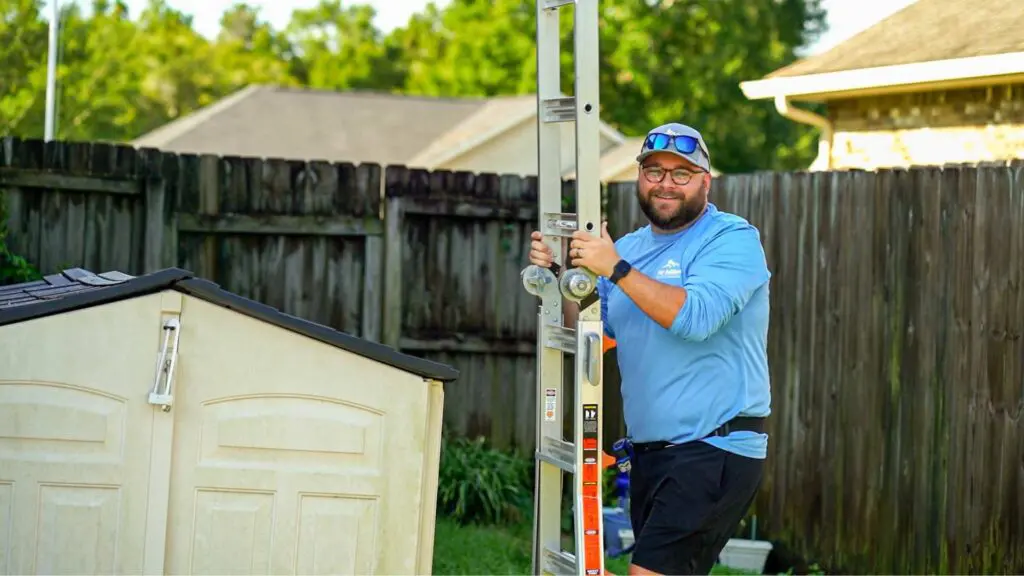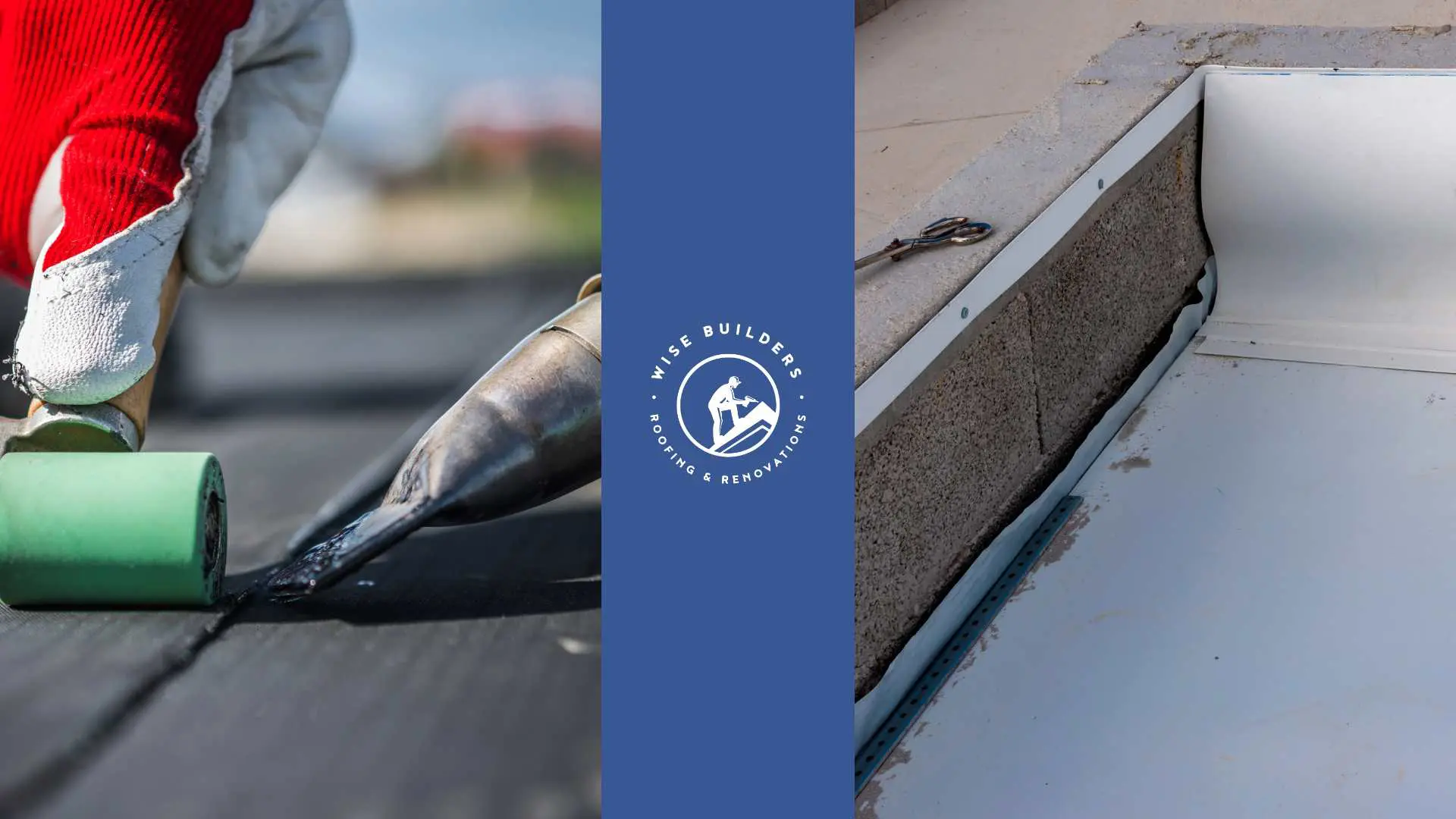Key Highlights
- A roofing square is a unit of measurement equal to 100 square feet of roof area.
- It’s a standard term used in the roofing industry for estimating material quantities and project costs.
- Calculating roofing squares involves determining your roof’s area, factoring in pitch and complexity.
- Accurate measurements are essential for ordering the correct amount of materials and avoiding shortages.
- Understanding roofing squares empowers homeowners to comprehend estimates and make informed decisions about their roof replacement projects.
Introduction
Starting a roofing project can seem like stepping into a whole new world. This world has its own terms. One key term you will come across is “roofing square.” A roofing square is an important unit of measurement in the roofing industry. It helps to show how much area a certain amount of roofing material will cover. Knowing this term is important for homeowners and contractors. It helps them talk clearly about the project scope, the material needed, and the total costs.
Defining a Roofing Square in Construction Terms
A roofing square is a 10-foot by 10-foot area. This means it covers 100 square feet of roof surface. When we talk about a roof’s size in square footage, we are figuring out how many of these 100 square foot areas are included. For example, a roof that is 1,500 square feet would have 15 roofing squares.
Using this standard measurement makes it easier to talk about roofing. It helps us quickly estimate how much material we need, what labor to use, and the total cost of a roofing project.

The Basics of Roofing Squares and Their Importance
Roofing squares are a key part of roofing. They help us understand how much material we need and the area it will cover. This standard way of measuring works well for different types of roofing materials like asphalt shingles, metal panels, or tiles. Each material has its own coverage rate for squares, making it easier to check and compare costs.
It is very important to calculate the number of squares correctly. If you underestimate, you may run out of materials and face delays in your project. If you overestimate, you will spend extra money unnecessarily. This shows why precise roof measurements matter. You also need to think about waste, roof pitch, and complex designs.
Overall, roofing squares give us a clear guide for the whole roofing process. They help with estimating costs, ordering materials, and making sure that installation is done well for a successful project finish.

Comparing Roofing Squares to Standard Square Footage
While roofing squares and standard square footage both show area, they are not the same in roofing. Standard square footage is just a flat space area. Roofing squares consider the slope and shape of the roof.
For example, measuring your home’s floor gives you the standard square footage. But this number does not show the actual area of your sloped roof. The pitch, or steepness, of your roof makes it larger in area. This means the roof will always have more square footage than the floor it covers.
So, it is important to know the difference between these two measurements. When you talk about your roofing project, use roofing squares for a better idea of your roof’s size and the materials you will need.

Calculating Your Roof’s Square Footage and Converting to Roofing Squares
To find out how many roofing squares you need for your project, follow a few steps to measure your roof properly. First, it is a good idea to ask a professional roofing contractor for exact measurements. However, knowing some basic steps can help you understand things better.
Start by measuring the length and width of each section of your roof. Next, remember to include the slope of the roof. Finally, convert this total square footage into roofing squares. Let’s break down the steps a bit more.

Step-by-Step Guide to Measuring Your Roof’s Area
Before you start, make sure you are safe. Wear the right gear and do not walk on a steep or slippery roof. If you are unsure, it is better to let the experts do the measurements.
Here are the easy steps to follow:
- Split Your Roof into Sections: Break your roof into smaller square or rectangular sections. This will make measuring easier.
- Measure Length and Width: Use a tape measure to carefully find the length and width of each section. To get accurate measurements, use a foot level. This helps keep the line straight, especially for the longer sections.
- Calculate Area of Each Section: Multiply the length by the width of each section. This will give you the area in square feet.
- Add Up the Areas: Add together the areas of all the sections. This will give you the total square footage of your roof.
Adjustments for Roof Pitch and Complexity
Once you know the total square footage, you need to consider the pitch of your roof. If the pitch is steeper, the actual surface area will be larger. You can use roofing calculators online to find the right multiplier for your roof’s pitch.
Also, if your roof has complex designs with dormers, valleys, or different lines, you need to make extra adjustments. These features increase the overall surface area, which means you will need more materials and labor. This will change the final number of roofing squares you need.
It’s very important to have accurate measurements. Even small errors can affect your material estimates and the total project costs. If you are unsure, talk to an experienced roofing contractor. They can give you precise measurements to help keep your project on track.
The Impact of Roofing Squares on Project Cost Estimation
The number of roofing squares affects the cost of replacing your roof. It determines how much roofing material you need. It also influences labor costs, disposal fees, and the time it will take to finish the project.
More roofing squares mean a bigger roof area, which can raise the total project costs. Knowing this connection helps homeowners understand the cost details from roofing contractors. This way, they can make smart choices about their investment.
Understanding Material Costs Per Roofing Square
One of the primary cost drivers in a roofing project is the chosen material. Different roofing materials are priced per square, reflecting factors like manufacturing cost, durability, and aesthetic appeal. For instance, a square of asphalt shingles will differ in price compared to a square of metal roofing or slate tiles.
Below is a simplified table showcasing a range of popular roofing materials and their estimated cost per roofing square. Keep in mind that these prices can vary based on location, availability, and specific product specifications.
| Material | Estimated Cost per Square |
| Asphalt Shingles | $100 – $400 |
| Metal Roofing | $300 – $900 |
| Tile Roofing | $400 – $1000 |
| Slate Roofing | $800 – $2000+ |
This table offers a general idea of material costs, and it’s essential to consult with your chosen roofing contractor for accurate pricing based on your selected material and project specifics.

Labor and Additional Expenses Influencing Total Cost
While material costs matter a lot, labor also plays a big part in your total project cost. The complexity and pitch of your roof, how easy it is to access the work area, and the local labor market rates can all affect labor costs.
Remember that the final cost includes more than just materials and labor. You may also need to pay for permits, disposal fees for old roofing materials, and any repairs that may come up during the project.
To understand the cost of your project better, ask your roofing contractor for a detailed estimate. A clear breakdown will help you make smart choices and feel good about your investment.
Conclusion
Understanding roofing squares is important for estimating costs in building projects. If you know how to calculate your roof’s square footage, you can handle your material and labor costs better. Think about how roof pitch and design affect the number of roofing squares you will need. This helps in planning your project accurately. If you want to start your construction project, ask professionals for quotes. Like Wise Builders Roofing and Renovations, a top Mobile Al Roofer. This can help you budget better. Learning about roofing squares allows you to make smart choices and save money.
Frequently Asked Questions
How does roof complexity affect the number of roofing squares needed?
Roof complexity is about things like the roof’s pitch, dormers, and other features. These details change the total surface area. More complexity means a bigger roof area. Because of this, you will need a higher number of roofing squares to cover the whole surface.
How many squares is a 2000 sq ft roof?
A 2000 sq ft roof is equal to 20 squares. One square covers 100 square feet. To find the number of squares, divide the total square footage of your roof, which is 2000, by 100. This gives you the number of squares.
Why Wise Builders Roofing? We have built hundreds of fortified roofs. We are highly rated by the Better Business Bureau and Nextdoor and we have 5 stars on, Google, Trust Index and Facebook.
Follow our social accounts: YouTube, Twitter, Instagram









